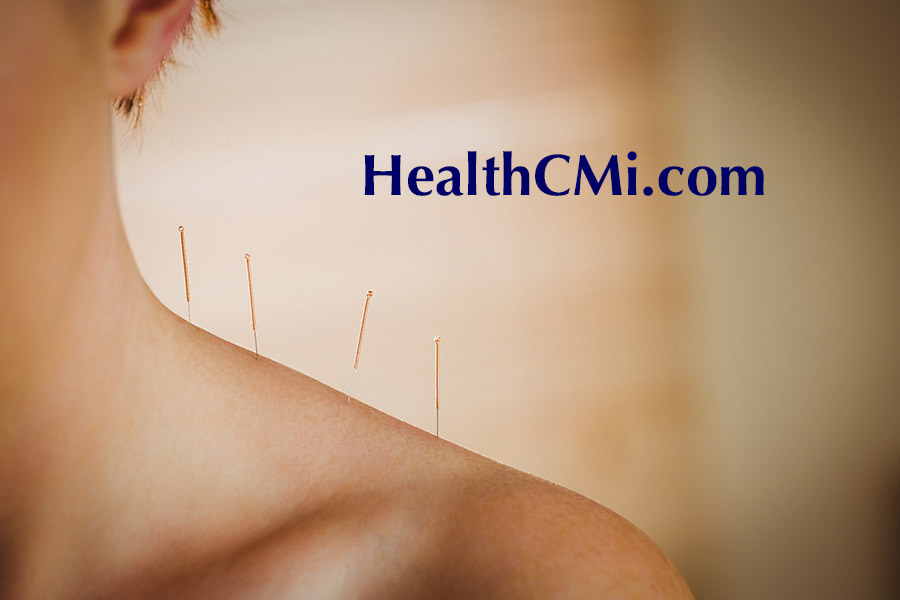
Acupuncture is an effective treatment modality for headaches due to cervical spine and soft tissue disorders. Today, we cover a variety of research showing acupoints used across multiple clinics that demonstrate results in modern research. We start with both ancient writings and modern electroacupuncture to examine the overall effectiveness of acupuncture for this condition.
Cervicogenic headaches are often unilateral, restrict range of motion, and emanate from bony structures or soft tissues. A chronic condition, this type of headache is often triggered by neck movements. The cervicogenic headache is caused by organic or functional injury to the cervical spine or soft tissues of the neck. Modern Chinese medicine practitioners classify it into several categories based on its clinical manifestations, such as headache, head-wind, neck pain, neck paralysis, etc…. The Inner Canon of the Yellow Emperor stated in the Su Wen Discourse on Wind, “When the wind qi follows the wind mansion and ascends, it becomes brain wind.” This illustrates a conceptual link between wind and the onset of disorders, including headaches.
In treating cervicogenic headaches with acupuncture, researchers determined that its therapeutic effects are related to regulating neurohumoral circulation, central analgesia, raising the pain threshold, and promoting local tissue repair. Acupuncture has been found to affect the levels of neurotransmitters such as 5-hydroxytryptamine, endogenous opioid peptides, and octapeptide cholecystokinin, thereby achieving analgesia. [1]
The filiform needle is the most commonly used and reported method for treating cervicogenic headaches in clinical acupuncture practices. According to the study, the acupoints used for treating cervicogenic headaches from highest to lowest frequency are as follows:
- GB20 (Fengchi)
- EX-B2 (cervical Jiaji)
- BL10 (Tianzhu)
- GV20 (Baihui)
- EX-HN5 (Taiyang)
- GB12 (Wangu)
- BL65 (Shugu)
- LI4 (Hegu)
- LU7 (Lieque)
- SI3 (Houxi)
- ST8 (Tou Wei)
The most common channels used were documented: gallbladder meridian, bladder meridian, sanjiao meridian, small intestine meridian, and ren meridian. [2]
Electroacupuncture
With the effects of needling improving blood circulation, electroacupuncture is a common treatment for cervicogenic headaches. Research shows that electrical stimulation regulates the release of various neurotransmitters in the body, thus achieving analgesia. [3] Low-frequency electrical stimulation enhances the release of endorphins from the brain, which are released from the spinal cord to the periphery. High-frequency electrical stimulation directly promotes the release of a large amount of endorphins from the spinal cord, thus achieving analgesia.
Researchers from Hubei University of Chinese Medicine used electroacupuncture to treat cervicogenic headaches. [4] The treatment group used 80 Hz high-frequency electroacupuncture, and the control group was treated with low-frequency electroacupuncture at 5 Hz. The result indicated that the therapeutic effect of high-frequency electroacupuncture in treating actual evidence of cervicogenic headache was more effective than that of the low-frequency group. This is an interesting finding given that a large amount of research on the lower back area treated with acupuncture indicates that 1–6 Hz is optimal.
Electroacupuncture With Herbal Medicines
A combination of acupuncture and medication is a standard treatment method used in clinical practice. Based on diagnosis and treatment, appropriate prescriptions are selected according to the condition of patients, which can enhance the effects synergistically.
In another investigation, a study compared the efficacy of electroacupuncture monotherapy with electroacupuncture combined with herbal decoctions. [5] Seventy patients were randomly divided into control and treatment groups, with 35 patients in each group. The treatment group received electroacupuncture combined with a pain relief decoction for oral intake; the control group only received electroacupuncture.
The acupuncture points included Ex-B2 (cervical Jiaji), GB20 (Fengchi), GV20 (Baihui), Ex-HN3 (Yintang), and Ex-HN5 (Taiyang) on the affected side. After arrival of the qi sensation, continuous waves of electroacupuncture with a frequency of 2 Hz were given. The treatment group was given the pain relief decoction: 12g Chuann Xiong, 10g Shan Zha, 10g Bai Ji Li, 20g Hong Hua, 20g Bai Hua She She Cao, 10g Ju Hua 10g Niu Xi, 20g Fu Ling. Boiled in water to one cup, split the dosage to be taken in the morning and evening for 4 weeks. The results showed that the pain scale score and cervical spine activity scale score of the two groups improved significantly, and the treatment group had better efficacy than the control group.
References:
[1] Ning Zheng & Shengming Zheng. (2018). Electroacupuncture with traditional Chinese medicine for the treatment of cervicogenic headache in 35 cases. Chinese Traditional Medicine Science and Technology.
[2] Fang, Jianqiao & Shao, Xiaomei. (2017). A new idea of acupuncture analgesia - the feasibility of acupuncture's involvement in multidimensional regulation of pain. Acupuncture Research.
[3] Zhang, W. L., Shi, B. B. & Zhou, R. Mi. (2016). On improving the synergy of muscle movement as one of the important mechanisms of acupuncture analgesia.
[4] A-Wen Li. (2013). The central neurotransmitter basis of acupuncture analgesia. Journal of Practical Chinese Medicine.
[5] Wang, Le & Jiao, Yang. (2012). Clinical observation on cervicogenic headache treated by electroacupuncture with different frequencies. Henan Journal of Traditional Chinese Medicine.


